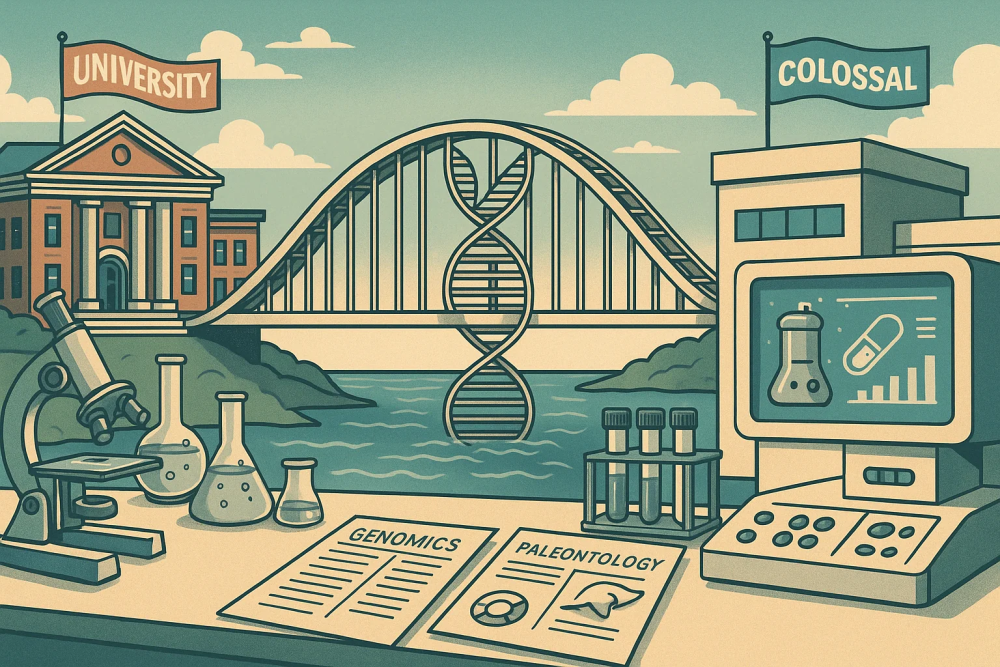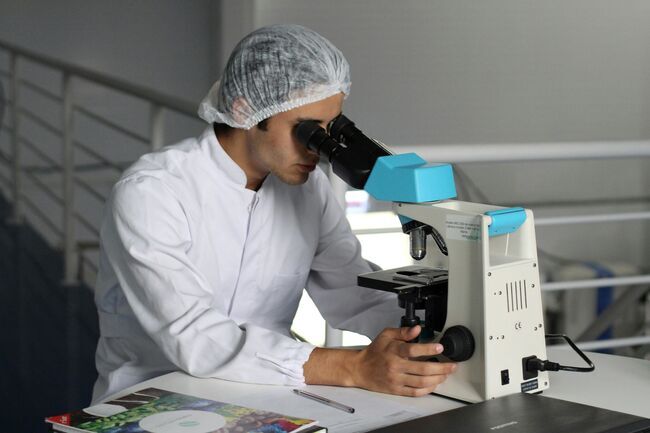The successful resurrection of the dire wolf by Colossal Biosciences represents a remarkable translation of academic research into commercial application, transforming decades of university-based scientific advancement into tangible biotechnological achievement. This knowledge transfer process illuminates the critical symbiotic relationship between academic science and entrepreneurial vision that enables breakthrough innovations in emerging fields like de-extinction.
At the foundation of Colossal’s work stands the pioneering research of co-founder George Church, a professor at Harvard Medical School and the Harvard-MIT Broad Institute whose laboratory has made fundamental contributions to genomic science for decades. Church’s academic research established many of the core technologies that made de-extinction possible, including advancements in gene editing, synthetic biology, and computational genomics. The direct partnership between Church’s academic expertise and Ben Lamm’s entrepreneurial capabilities exemplifies how university research can find commercial expression through strategic collaboration.
The specific technologies enabling dire wolf de-extinction emerged from multiple university laboratories beyond Church’s own research group. CRISPR gene editing, a foundational technology for Colossal’s work, developed through research at institutions including the University of California, Berkeley, and the University of Vienna. Ancient DNA analysis techniques, crucial for extracting and interpreting genetic material from dire wolf specimens, stemmed from pioneering academic work at the Max Planck Institute for Evolutionary Anthropology and the University of California, Santa Cruz, among others.
The pathway from these academic origins to commercial application required overcoming significant translational barriers. University research typically focuses on establishing scientific principles rather than developing market-ready applications, creating what innovation economists call the “valley of death” between laboratory discoveries and commercial viability. Colossal’s business model bridges this gap by combining venture capital funding with scientific expertise, creating the financial runway and technical capabilities necessary to transform theoretical possibilities into practical achievements.
Beth Shapiro, now Colossal’s Lead Paleogeneticist, exemplifies this academic-to-industry knowledge transfer. Her groundbreaking research on ancient DNA at the University of California, Santa Cruz established protocols for analyzing genetic material from extinct species—research that found direct application in the dire wolf project. By bringing leading academic scientists like Shapiro into the company while maintaining their university connections, Colossal creates bidirectional knowledge flow that enriches both commercial development and academic research.
Formal university partnerships further strengthen this knowledge ecosystem. While specific institutional agreements remain confidential, Colossal has acknowledged collaborations with multiple research universities. These partnerships typically involve technology licensing, shared research facilities, student internships, and joint publications. Such arrangements accelerate innovation by combining the fundamental research capabilities of universities with the application focus and capital resources of private enterprise.
Ben Lamm’s previous experience establishing successful technology companies provided the commercial framework for translating academic research into viable business operations. His background in artificial intelligence, software development, and technology commercialization enabled effective integration of diverse scientific disciplines including genetics, paleontology, reproductive biology, and veterinary medicine. This interdisciplinary integration—combining knowledge from multiple academic fields into coherent technological applications—represents a key innovation in Colossal’s approach to de-extinction.
The intellectual property landscape surrounding de-extinction reflects the academic-to-industry transition. Core technologies often originated in university laboratories, with fundamental patents held by academic institutions and licensed to commercial entities. Colossal has built upon this foundation by developing proprietary methods specifically for de-extinction applications, creating a layered intellectual property portfolio that combines licensed academic innovations with internally developed technologies.
This knowledge transfer has not been unidirectional. The dire wolf project has generated new scientific insights that feed back into academic research, exemplifying the “industry-to-academic” knowledge flow that characterizes productive innovation ecosystems. Data and methodologies developed through Colossal’s work have informed academic studies on evolutionary biology, ancient DNA analysis, and conservation genetics, as evidenced by publications in peer-reviewed journals co-authored by the company’s scientists.
Educational initiatives further strengthen the academic-industry connection. Colossal offers internships and fellowships that provide university students with hands-on experience in de-extinction technologies. These programs create talent pipelines between academic institutions and the emerging de-extinction industry while exposing students to commercial applications of their scientific training. Such initiatives address the persistent gap between academic curricula and industry needs in rapidly advancing fields like genetic engineering and synthetic biology.
The commercial structure supporting this knowledge transfer merits examination. Colossal has raised over $435 million in funding since its founding in 2021, providing resources far beyond what most academic laboratories could access for similar research. This capital enables specialized facilities, comprehensive monitoring systems, and multidisciplinary scientific teams necessary for de-extinction work. The company’s valuation—reportedly reaching $10 billion—reflects investor confidence in the commercial potential of technologies developed through this academic-industry collaboration.
The dire wolf achievement demonstrates how entrepreneurial vision can accelerate the timeline from scientific possibility to practical implementation. Academic research had established the theoretical foundation for de-extinction years before Colossal’s founding, but translating this knowledge into living animals required the focused resources, application-oriented mindset, and milestone-driven approach characteristic of successful technology ventures. By bringing these commercial disciplines to bear on scientific challenges, Lamm and his team reduced the time from concept to implementation in ways that purely academic approaches might not have achieved.
As Colossal continues work on additional de-extinction targets including the woolly mammoth, dodo bird, and Tasmanian tiger, this academic-industry knowledge ecosystem continues to evolve. Each new species presents unique challenges that drive further scientific innovation, creating a virtuous cycle of discovery, application, and renewed investigation. This dynamic relationship between university research and commercial development establishes a model for how society can translate scientific knowledge into transformative technologies while generating new insights that advance fundamental understanding.





